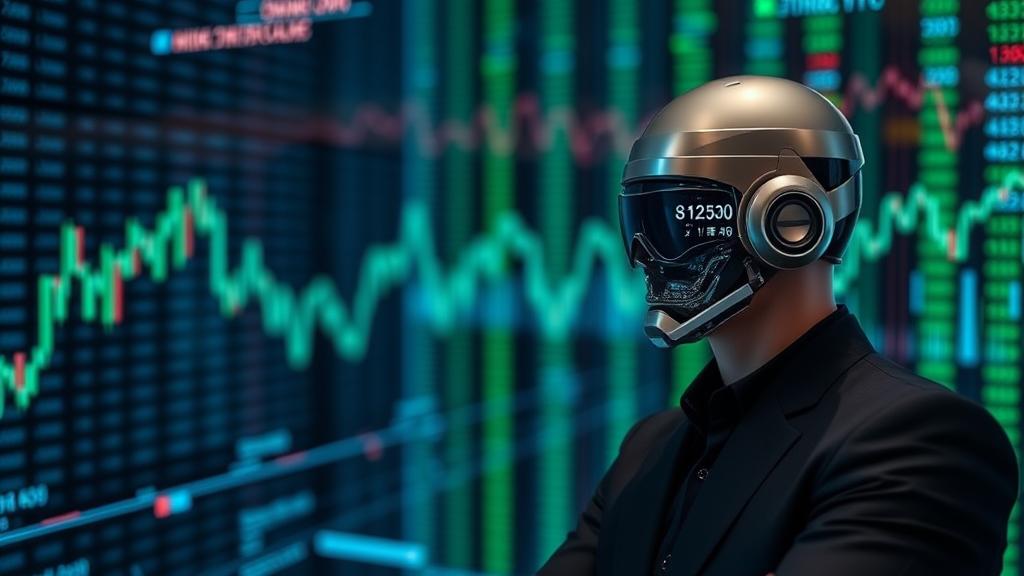Highlighting the Shift to Algorithmic Approaches
In today’s fast-paced financial landscape, automated decisions are no longer a luxury—they’re a necessity for savvy investors.
AI in High-Frequency Trading: Achieving Microsecond Advantages
The world of finance is undergoing a seismic shift, propelled by advancements in technology. At the forefront of this revolution is Artificial Intelligence (AI), which is reshaping high-frequency trading (HFT). As traders race to execute thousands of orders in fractions of a second, AI is proving to be an indispensable ally. In this article, we will explore how AI is transforming high-frequency trading, the techniques it employs to gain microsecond advantages, and the implications of its use in the financial markets.
High-frequency trading refers to a type of algorithmic trading that involves executing a large number of orders at extremely high speeds. These trades typically last for a very short duration, often just milliseconds or microseconds.
Key Features of High-Frequency Trading
- Speed**: HFT relies on ultra-low-latency technology to execute trades in fractions of a second.
- Volume**: Traders execute thousands or even millions of trades per day.
- Data-Driven**: HFT strategies are based on quantitative analysis and market data.
- Algorithmic Execution**: Trades are executed by algorithms, which eliminates human intervention.
How AI Enhances HFT
AI technologies, such as machine learning and natural language processing, can analyze vast amounts of data more efficiently than traditional methods. This capability allows traders to:
- Identify patterns and trends in real-time.
- Execute trades based on predictive analytics.
- Optimize strategies continuously through self-learning algorithms.
The Role of AI in Achieving Microsecond Advantages
In the ultra-competitive world of HFT, even a microsecond can make a difference between profit and loss. AI enhances speed and accuracy through various means.
1. Predictive Analytics
AI algorithms can predict market movements by analyzing historical data and identifying patterns. For example:
- Statistical Arbitrage**: Traders can exploit price discrepancies between correlated assets by predicting when they will converge or diverge.
- Market Sentiment Analysis**: By analyzing news articles and social media, AI can gauge market sentiment, allowing traders to anticipate price movements.
2. Real-Time Data Processing
AI systems can process real-time market data far faster than humans. This capability allows for:
- Instant Decision Making**: Algorithms can react to market changes within microseconds.
- Latency Reduction**: AI can identify the fastest routes for data transmission, reducing latency and improving execution speed.
3. Adaptive Algorithms
AI’s ability to learn and adapt plays a crucial role in HFT. Adaptive algorithms can:
- Refine Strategies**: Continuously analyze performance and tweak trading strategies based on market conditions.
- Risk Management**: Adjust risk parameters in real time, optimizing trade execution while minimizing losses.
4. Order Execution Optimization
AI can enhance order execution strategies through:
- Smart Order Routing**: AI can determine the best venues for executing trades, maximizing efficiency and minimizing costs.
- Liquidity Detection**: Algorithms can identify liquidity levels in real-time, allowing traders to execute orders without significantly impacting market prices.
Challenges and Risks of AI in High-Frequency Trading
While AI offers numerous advantages in HFT, several challenges and risks must be considered.
1. Market Volatility
AI-driven strategies can exacerbate market volatility. For example, during a sudden market downturn, many algorithms might trigger sell orders simultaneously, leading to a sharp decline in prices.
2. Regulatory Scrutiny
As AI becomes more pervasive in trading, regulators are increasingly concerned about its implications. Issues such as:
- Market Manipulation**: The potential for AI to engage in manipulative practices, such as quote stuffing or spoofing, raises ethical questions.
- Transparency**: Algorithms can be complex and opaque, making it difficult for regulators to understand their decision-making processes.
3. Technical Failures
Reliance on technology can also introduce risks. A malfunction in an algorithm can lead to significant financial losses. Notable examples include:
- The 2010 Flash Crash, where HFT algorithms contributed to a sudden market plunge.
- The Knight Capital Group incident, where a software glitch resulted in a $440 million loss in just 30 minutes.
Future Trends in AI-Driven High-Frequency Trading
As technology continues to evolve, several trends are emerging in AI-driven high-frequency trading.
1. Enhanced Machine Learning Techniques
The development of advanced machine learning techniques, such as reinforcement learning, is expected to improve the adaptability and performance of trading algorithms.
2. Quantum Computing
Quantum computing holds the potential to revolutionize HFT by enabling the processing of vast datasets at unprecedented speeds. This could lead to even more sophisticated trading strategies.
3. Increased Collaboration Between AI and Human Traders
Rather than completely replacing human traders, AI is likely to augment their abilities. Traders may use AI tools for data analysis and strategy development while retaining oversight of trading decisions.
4. Greater Emphasis on Ethical AI
As AI becomes increasingly integrated into HFT, the focus on ethical considerations will grow. This may involve:
- Developing clear guidelines for AI use in trading.
- Ensuring algorithms are transparent and accountable.
Conclusion
Artificial Intelligence is undeniably transforming the landscape of high-frequency trading, providing traders with the ability to achieve microsecond advantages. By leveraging predictive analytics, real-time data processing, adaptive algorithms, and optimized order execution, AI is enhancing the speed, efficiency, and profitability of trading strategies. However, the challenges and risks associated with its use cannot be overlooked. As we look to the future, the integration of AI in HFT will undoubtedly continue to evolve, paving the way for a new era in finance that combines speed, accuracy, and ethical considerations. For traders, the key to success lies in harnessing the power of AI while navigating the complexities of the financial markets.



